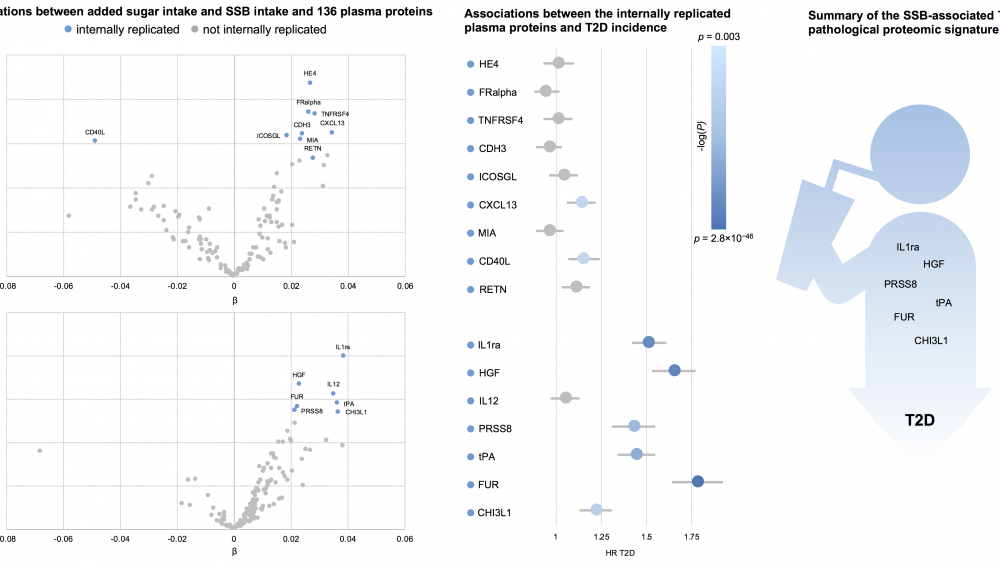We recently published a new article in the journal Nutrients where we looked into the plasma proteome in relation to intake of added sugar and sugar-sweetened beverages (SSBs) and risk of type 2 diabetes (T2D).
The article Identification of Inflammatory and Disease-Associated Plasma Proteins that Associate with Intake of Added Sugar and Sugar-Sweetened Beverages and Their Role in Type 2 Diabetes Risk can be found in whole on the following link.
In this study, we aimed at examining how added sugar and sugar-sweetened beverage intake associate with 136 measured plasma proteins and C-reactive protein in the Malmö Diet and Cancer–Cardiovascular Cohort (n = 4382), and examine if the identified added sugar- and SSB-associated proteins associate with T2D incidence.
We identified nine plasma proteins that associated with added sugar intake. Out of these, two proteins associated significantly with increased T2D incidence: CXCL13 and CD40L. We identified seven proteins that associated with SSB intake and six of these were strongly associated with T2D incidence: HGF, tPA, CHI3L1, IL1ra, PRSS8 and FUR. These six associations were much stronger than those of the two proteins that associated with added sugar intake. This indicates that SSB intake associates with a T2D-pathological proteomic profile, while this cannot be stated for added sugar intake.
We could not find any significant linear association between added sugar intake and CRP, and neither could we replicate a significant association between SSB intake and CRP which many previous studies have seen, although a tendency for such an association could be observed (p-trend = 0.09). Nevertheless, a significant positive interaction effect between added sugar intake and CRP on the risk of T2D was observed (p = 0.01), where increased T2D risk from high added sugar intake could only be observed at higher CRP levels.
“In conclusion, this is a hypothesis generating study that is the first of its kind to identify plasma proteins and proteomic signatures that are associated with added sugar and SSB intake. Turning to the proteome to elucidate the complex potential relationship between sugar intake and T2D incidence did not provide a clear enlightenment, but despite the fact that no significant associations were observed between added sugar and SSB intake with levels of CRP, the data suggests that SSB intake is related to a T2D-pathological proteomic signature, while this was not observed for added sugar intake. Replications in larger and more recent cohorts are necessary to verify our results.”

